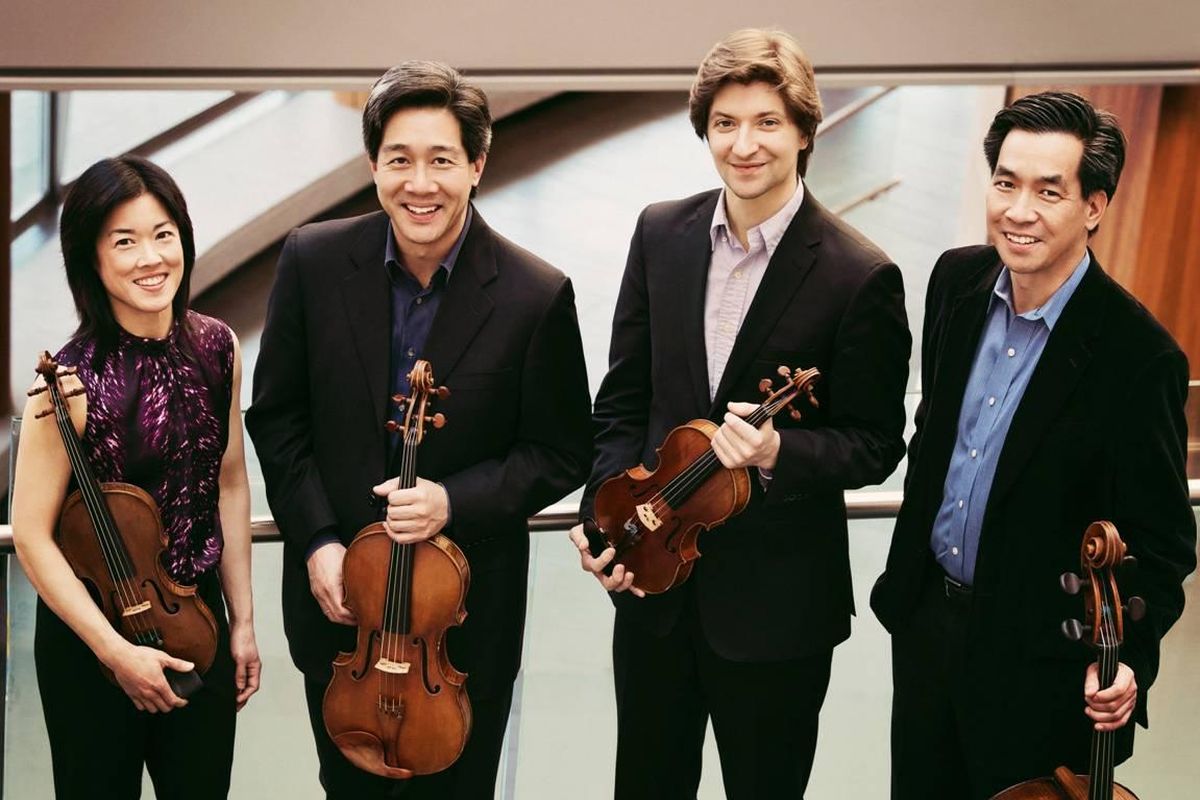Concert review: Ying Quartet brings emotion, energy to BachFest’s opening concert
Ying String Quartet will perform a variety of works while in Spokane. (Courtesy)
The inaugural concert of the 2018 Northwest BachFest was made of ideal pairings: the Ying String Quartet playing chamber music that perfectly matched its personality in a venue that allowed the music to shine.
For a successful string quartet, the four players must combine years of individual study into an organic entity that thinks and plays as one. The most famous – the Budapest String Quartet, the Amadeus Quartet or the Julliard String Quartet – are instantly identifiable by their sound and stylistic profile. The Ying Quartet – Robin Scott (violin), Janet Ying (violin), Phillip Ying (viola) and David Ying (cello) – has achieved this, too.
As soon as the resonant recesses of Barrister Winery filled with the opening strains of Mendelssohn’s Quartet No. 1 in E-flat Op. 12, the character of the Ying Quartet became apparent: a warm, burnished tone that seems to emerge unforced from their instruments. Even in the most intense passages, there is an underlying sweetness and lyricism. This description would apply as well to the music of Mendelssohn as to the Ying Quartet, so it goes without saying that the First Quartet sang and danced with exactly the balance between vigor and lyricism demanded by the music. This did not preclude some passages of fearsome virtuosity (also characteristic of Mendelssohn’s musical personality) that were carried off by violinist Scott with magisterial command.
In counterpoise to the Mendelssohn in the first half of the program was the String Quartet Op. 3 (1910) of Alban Berg. As the performance unfolded, the audience came to see the truth of the remarks David Ying made in his introduction: that, despite the obvious difference between the harmonic languages of the two works, Berg’s aim was really the same as that of Mendelssohn. Both composers sought to communicate intense emotion as freely and effectively as possible.
In turning away from the traditional diatonic harmonic language employed since before the time of Bach, and adopting the 12-tone system created by his teacher, Arnold Schoenberg, Berg succeeded in freeing himself from fixed tonal relationships and melodic lengths divisible by four that underpin the musical vocabulary of Mendelssohn. In the Berg Quartet, ideas and feeling are free to develop, expand and morph as human feelings actually do. The perfectly matched voices of the Ying Quartet surged and faltered together in bringing Berg’s passionate outpourings to life, allowing a vivid emotional narrative to take shape in the mind’s eye of the audience.
In the second half of the program, the Ying Quartet was joined by cellist and festival artistic director Zuill Bailey for Beethoven’s “Kreutzer Sonata.” The 1803 sonata, originally composed for violin and piano, is the longest and most ambitious of Beethoven’s violin sonatas and the most symphonic in conception, making it a natural candidate for arrangement for a larger ensemble. The taxing violin part is assigned almost entirely to the first violin and was brilliantly brought to life by Scott, while Beethoven’s dense piano writing is distributed quite evenly to the second violin, viola and two cellos.
Although it lacks the bristling contrast between a percussive instrument and a bowed instrument of the original version, the quintet arrangement of the sonata conveys most of the wit and fearsome energy of the original, especially when performed with the expertise and commitment we witnessed in the Ying Quartet and their distinguished guest. Bailey is not known primarily as a chamber musician, but as a celebrated and charismatic soloist, and there were several times during the performance when one’s attention was drawn from the work’s more significant melodic content to the brilliance and magnetism emerging from the second cello.

